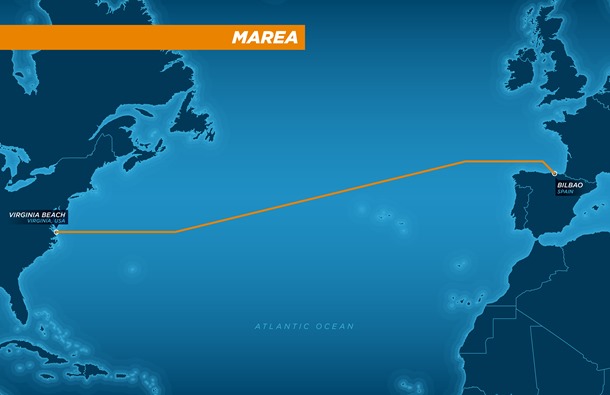Investing in undersea internet cables has been a big part of data strategy plans for tech giants in recent years. Now Microsoft and Facebook are teaming up for the mother of all cables: A 6600km monster that can move 160Tbps, which will make it the highest-capacity cable on Earth. The cable even has a name, MAREA, and it will break ground (break waves?) later this year. Hopefully it can handle all your selfies.
STEPHAN AGOSTINI/AFP/Getty Images
Last year, Microsoft first announced it would need to lay such a cable to help funnel the ever increasing flood of customer data that’s stored in the cloud. Partnering with Facebook, which has similar data challenges, makes sense as Facebook can help pick up some of the $US15 billion-plus ($21 billion-plus) cost of the project.

MAREA will take a slightly different route than other transatlantic cables. Image: Microsoft
The Microbook-Facesoft cable also helps address one of the biggest challenges with these types of internet infrastructure projects. Most of the transatlantic cables that currently serve the US land in New York and New Jersey. Were some kind of disaster — say nuclear attack, earthquake or even a ship’s anchor, no joke — to hit the region, it could wipe many of them out. The need for geographic diversity is one of the reasons why the MAREA cable will originate in Virginia Beach. (Here’s a great explainer by The Undersea Network author Nicole Starosielski on why we need more robust cables in a variety of locations.) This is probably why Microsoft is also working on its own transpacific cable as well.
US telecom companies like AT&T and Sprint have traditionally helped finance these types of cables, but they’re quickly being outpaced in both length and capacity by tech companies. Although several cables are longer (like the 39,000km SEA-ME-WE-3 which connects two dozen countries), MAREA has eight fibre pairs where many cables only have two. That means the 160 Tbps-capacity cable will be nearly twice the capacity of a new 60 Tbps Google-backed cable named, ironically, FASTER.
MAREA will be built and operated by Telxius, the infrastructure arm of Spanish telecommunications giant Telefónica, which will use part of the capacity to serve its own customers. The cable will be finished by October of 2017 and ready to take on the most data-heavy of Bing searches and Facebook updates then.
